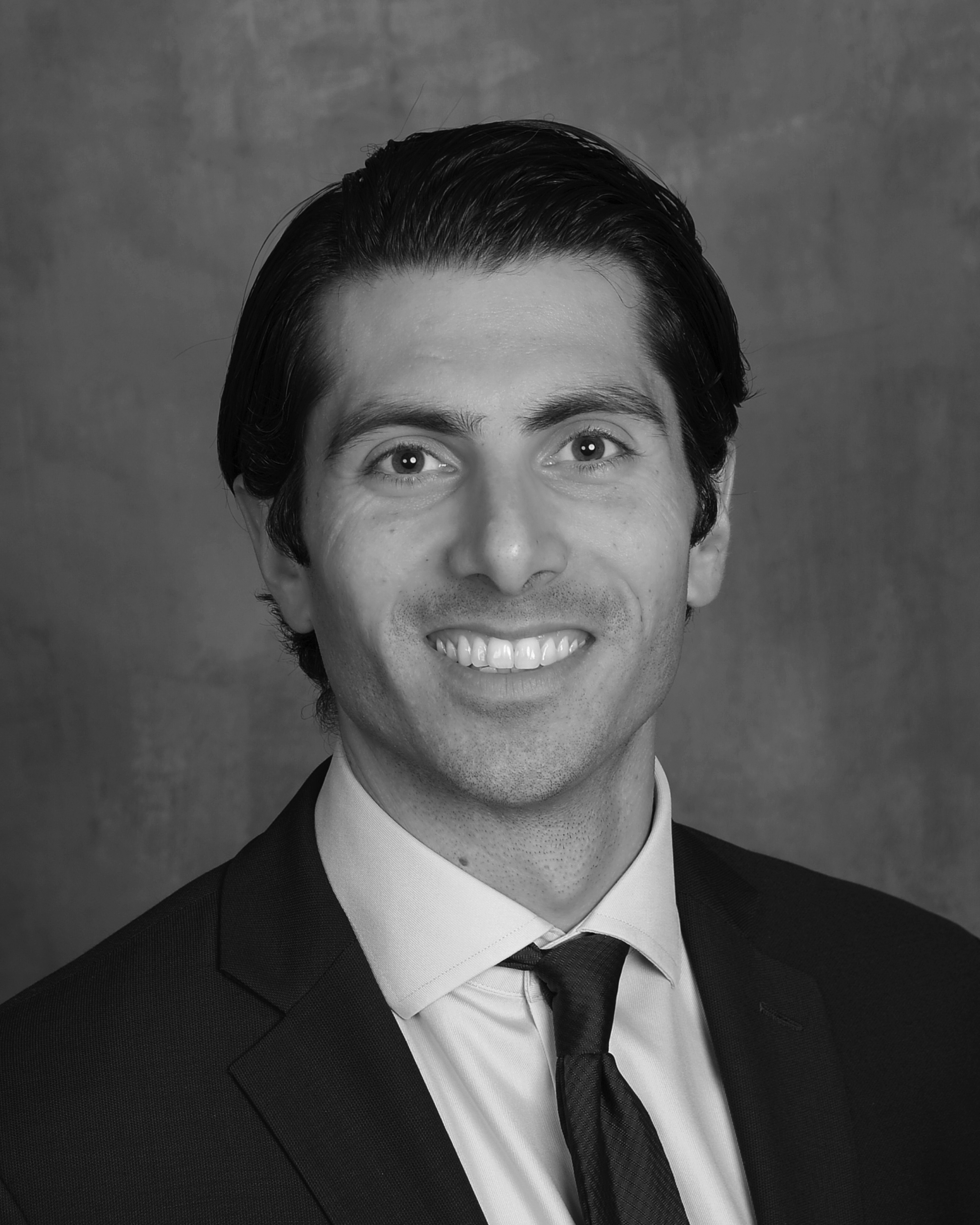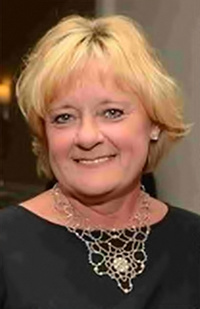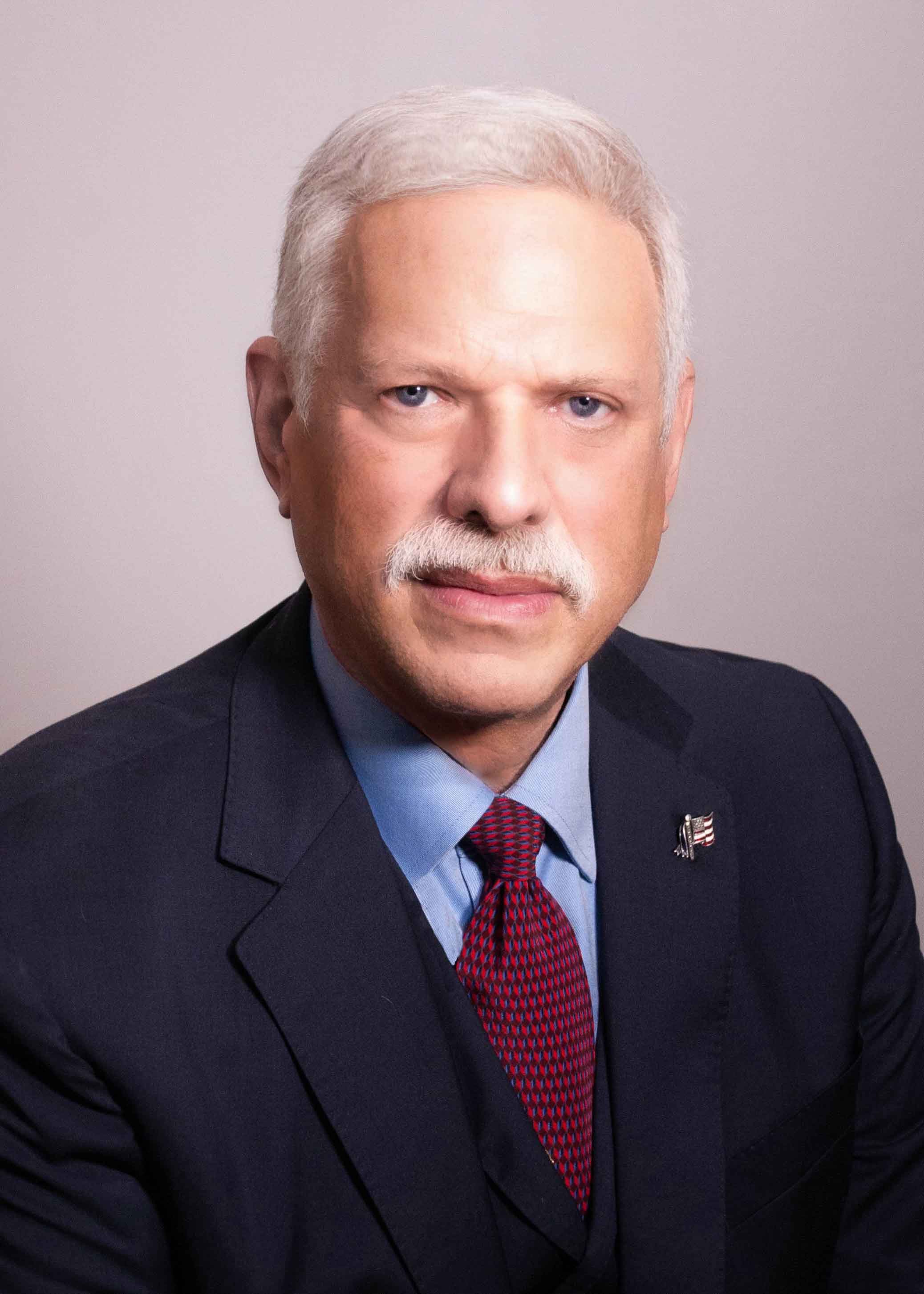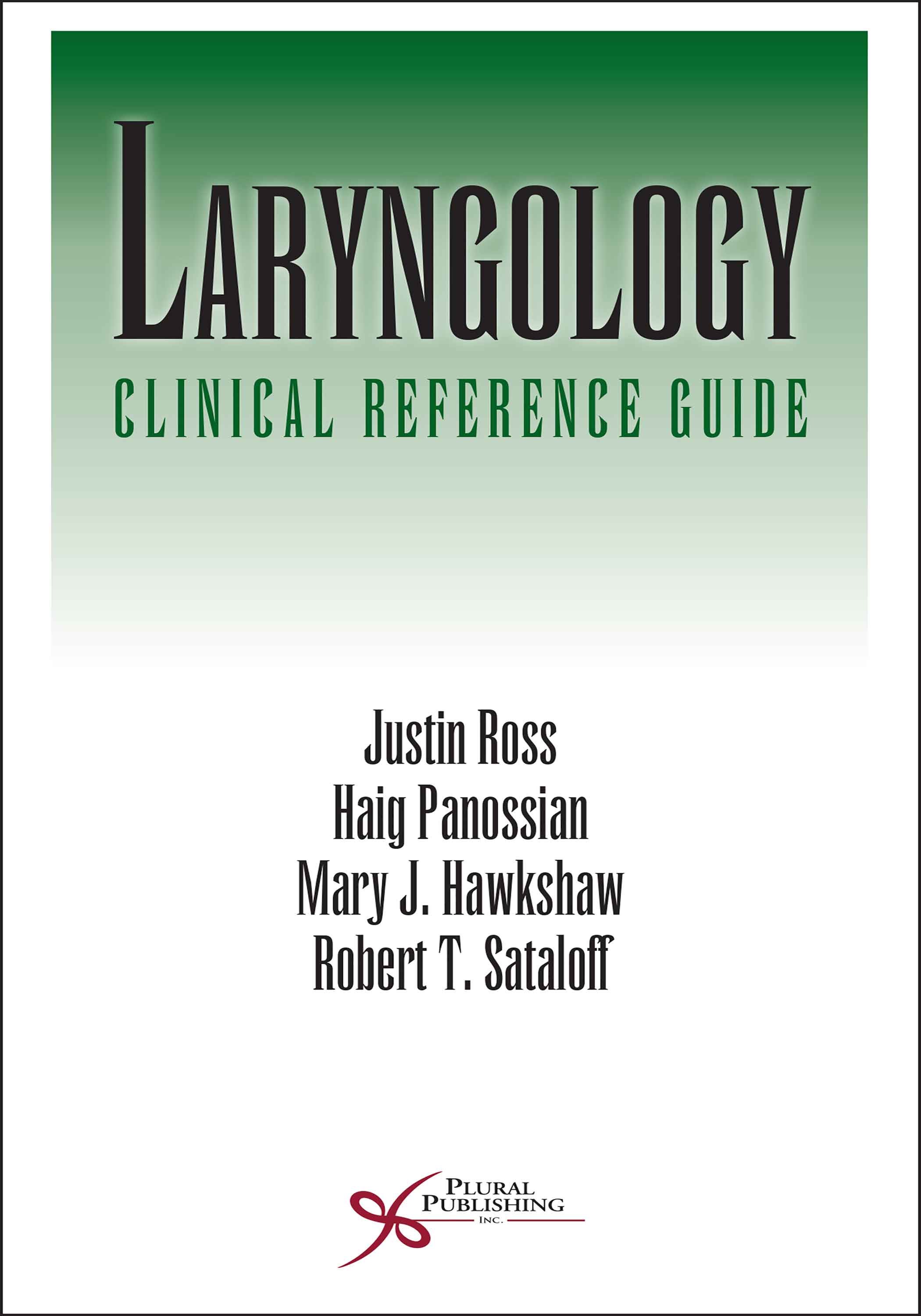
Laryngology: Clinical Reference Guide
First Edition
Justin Ross, Haig Panossian, Mary J. Hawkshaw, Robert T. Sataloff
Details: 534 pages, B&W, Softcover, 4.5" x 8"
ISBN13: 978-1-63550-140-7
© 2020 | Available
Purchase
Laryngology: Clinical Reference Guide is a portable reference guide that fills the void of an easy-to-read, concise, but comprehensive book encompassing all aspects of laryngology. Each chapter follows a uniform outline to facilitate quick review of a topic, and the comprehensive nature of each chapter provides depth. This clinically relevant resource is organized into ten sections that are broken down into their most important and fundamental parts by chapter, including the History of Laryngology; Embryology, Anatomy, and Physiology; Evaluation and Physical Examinations; Laryngologic Disorders; Neurolaryngology; Laryngologic Manifestations of Systemic Diseases; Pediatric Laryngology; Surgery; Swallowing Disorders; and Therapy.
As a review book, it is ideal for residents and fellows in training and those preparing for board and in-service training examinations, as well as medical students looking for a "deeper dive" into the world of laryngology. However, it is also excellent for the practitioner who wants to get a succinct update on the latest, cutting-edge knowledge in all areas of laryngology. The information is authored by a collection of "who's who" in laryngology.
Formatted like the bestselling "Pasha" (Otolaryngology-Head and Neck Surgery) pocket guide, this text provides a condensed amount of high-yield information with a multidisciplinary approach to bring a broad range of insight into complex clinical challenges.
Key Features
- Contributions by leaders in the field
- Tabs for each section for quick access
- Key terms and notes in bold and italics
Reviews
"The book opens with a very readable chapter on the history of laryngology, from Imhotep of Ancient Egypt, to the Sataloff of our own day. Basic Science chapters include a real pearl in “Patient History and Physical Examination”. I can now, with great authority, speak of such vocal fold abnormalities as decreased amplitude, glottic gap, mucosal wave abnormalities etc. How many readers knew that, during endoscopy you should get the patient to count 60-69 to detect abductor spastic dysphonia (SD) and 80-89 for adductor SD? As an otologist, I had long been baffled by the acronym (or maybe it is an initialism, as unpronounceable) of GRBAS, but can now even offer CAPE-V as an alternative. The text is even better on special investigations, whether stroboscopy, electromyography and all the armamentarium of the clinical voice laboratory.
You would expect extensive coverage of trauma, tumours, inflammatory diseases and congenital abnormalities and will not be disappointed. What was particularly novel though was a collection of four chapters on Neurolaryngology, one on “Cough and the Unified Airway” and, especially thought provoking, “Care of the Transgender and Gender Nonconforming Patient”. I had always wondered why there was seemingly only a Type II Thyroplasty (for vocal cord paralysis), but have finally discovered the Type IV, a cricothyroid approximation, along with several others aiming to raise vocal pitch. Dysphagia, reflux and oesophageal dysmotilities, with the appropriate investigations, make up no fewer than 60 pages, despite the book title. Add to that a very easily understood chapters on pulmonary function tests and this proves a very comprehensive work indeed."
—Liam M. Flood, FRCS, FRCSI, in Journal of Laryngology and Otology (August 2019)
"The editors and authors are well known in laryngology circles, especially Robert Sataloff.
It is divided into 10 sections with a total of 38 chapters covering all aspects of laryngology, from history and embryology to voice and swallow. Each chapter is of varying length but generally short enough to be concise whilst maintaining interest. [...] I particularly enjoyed reading the chapter on laryngotracheal trauma and premalignant lesions of the larynx.
There is a 30-page section on neurolaryngology. This short section is informative and gives a good summary of neurophysiology, dystonias and vocal fold paresis. It is a good starting point for a laryngologist in waiting and can be used as a foundation to build further knowledge.
Detailed surgical techniques are beyond the intended scope of this book and therefore not really described but it does have the basics e.g. laser physics, different laryngoscope types and injectable materials. In-depth operative techniques need to be acquired from elsewhere.
Swallowing disorders are covered towards the end of the book; this again is very concise and to the point and is enough for a generalist or a trainee but not a consultant with an interest in swallow. Overall, I would summarise this book by saying it a very useful review book/portable pocket guide. It is more aimed at trainees and definitely serves a purpose and fills a void that previously existed."
—Omar Mulla, Doncaster Royal Infirmary, in ENT & Audiology News (March 2021)
Preface
About the Editors
Contributors
Part I. History of Laryngology
Chapter 1. History of Laryngology
Justin Ross, Mary J. Hawkshaw, and Robert T. Sataloff
Pre-Grecian Civilizations
Greek and Roman Civilizations
Middle Ages
Renaissance to Late 19th Century
20th Century to Present
Part II. Embryology, Anatomy, and Physiology
Chapter 2. Embryology and Development of the Larynx
Haig Panossian, Mary J. Hawkshaw, and Robert T. Sataloff
Stages and Structures of Development
Developmental Anaomalies
Postnatal Development
Chapter 3. Anatomy and Physiology
Justin Ross, Ayman Bodair, Mary J. Hawkshaw, and Robert T. Sataloff
Laryngeal Anatomy (Figure 3–1)
Phonatory Physiology
Esophageal Embryology
Esophageal Anatomy
Part III. Evaluation and Physical Examination
Chapter 4. Patient History and Physical Examination
Justin Ross, Mary J. Hawkshaw, and Robert T. Sataloff
Patient History
Common Laryngologic Problems
Laryngeal Examination
Vocal Fold Vibratory Abnormalities
Voice Examination
Swallowing Evaluation (See Chapter 35)
Chapter 5. The Clinical Voice Laboratory
Haig Panossian, Mary J. Hawkshaw, and Robert T. Sataloff
The Purpose of the Clinical Voice Laboratory
The Clinical Assessment and Examination
Objective Voice Analysis
Chapter 6. Laryngeal Electromyography
Haig Panossian, Mary J. Hawkshaw, and Robert T. Sataloff
Overview
EMG Examination
Laryngeal EMG
Part IV. Laryngologic Disorders
Chapter 7. Infections and Inflammatory Disorders of the Larynx
Justin Ross, Sammy Othman, Mary J. Hawkshaw, and Robert T. Sataloff
Pharyngitis
Acute Supraglottitis (Epiglottitis)
Croup (Laryngotracheobronchitis)
Other Infectious Disorders
Fungal Infections
Angioedema
Chapter 8. Non-Neoplastic Structural Abnormalities of the Larynx
Justin Ross, Mary J. Hawkshaw, and Robert T. Sataloff
Vocal Nodules
Laryngeal Cysts
Vocal Fold Polyps
Contact Granuloma and Vocal Process Ulcer
Reactive Lesions
Vocal Fold Hemorrhage
Reinke’s Edema
Prolonged Ulcerative Laryngitis
Sulcus Vocalis
Mucosal Bridge
Laryngeal Webs (See Chapter 12)
Bowed Vocal Folds
Arytenoid Dislocation and Subluxation
Chapter 9. Vocal Fold Scar
Arthur Uyesugi and Jaime E. Moore
Introduction
Anatomy of the Vocal Folds
Clinical Evaluation
Management
Chapter 10. Vocal Fold Injury and Repair
Susan L. Thibeault
Introduction
Wound Healing
Vocal Fold Manifestations of Injury and Repair
Microarray Analysis of Vocal Fold Wound Healing and Benign Vocal Fold Lesions
Future Directions and Therapeutic Applications
Chapter 11. Laryngotracheal Trauma
Yolanda D. Heman-Ackah
Introduction
Schaefer Classification System for Severity of Laryngeal Injuries
Adult Framework Injury
Pediatric Framework Injury
Soft Tissue Injuries from Blunt Trauma
Clinical Evaluation of Blunt Trauma
Surgical Exploration and Repair
Penetrating Injuries
Caustic Injuries (See Chapter 31)
Thermal Injuries
Iatrogenic Injuries
Chapter 12. Acquired Glottic Stenosis
Jared M. Goldfarb, Justin Ross, and Joseph R. Spiegel
Anatomy
Etiology
Evaluation
Treatment
Chapter 13. Acquired Subglottic Stenosis
Bhavishya S. Clark, Justin Ross, and Michael M. Johns, III
Introduction
Anatomy and Physiology of the Subglottis
Causes
Histology and Pathophysiology
Clinical Evaluation
Grading Systems for SGS
Management Introduction
Medical Management
Endoscopic Repair
Open Repair
Prevention
Chapter 14. Tracheal Stenosis
Jared M. Goldfarb and Joseph R. Spiegel
Introduction
Anatomy
Embryology
Congenital Tracheal Stenosis (CTS)
Acquired Tracheal Stenosis
Differential Diagnosis
Diagnosis
Management
Chapter 15. Benign and Premalignant Lesions of the Larynx
Haig Panossian, Justin Ross, Mary J. Hawkshaw, and Robert T. Sataloff
Terminology
Leukoplakia
Erythroplakia
Classification Systems of Dysplasia
Carcinoma in Situ (CIS)
Granular Cell Tumor
Lipoma
Amyloidosis
Cartilaginous Tumors of the Larynx
Laryngeal Schwannoma
Chapter 16. Laryngeal Neoplasia
Travis Weinsheim, Luke J. Pasick, and Christopher E. Fundikowski
Overview
Subsites and Boundaries
Tumor Biology and Pathology
Premalignant Lesions (See Table 16–1)
Staging (Based on AJCC 8th edition)
Treatment (See Table 16–2)
Surgical Approaches
Communication After Laryngectomy
References
Part V. Neurolaryngology
Chapter 17. Laryngeal Neurophysiology
Justin Ross, Mary J. Hawkshaw, and Robert T. Sataloff
Introduction
Motor Function (See Chapter 3)
Sensory Function
Laryngeal Reflexes
Vocalization
Chapter 18. Vocal Fold Paresis and Paralysis
Justin Ross, Mary J. Hawkshaw, and Robert T. Sataloff
Introduction
Evaluation
Treatment
Bilateral Vocal Fold Paralysis (BVFP)
Pediatric Vocal Fold Paralysis (See Chapter 31)
Chapter 19. Laryngeal Dystonia
Justin Ross and Aaron J. Jaworek
Introduction
Spasmodic Dysphonia
Other Laryngeal Dystonias
Chapter 20. Neurologic Disorders Affecting Airway and Voice
Justin Ross, Mary J. Hawkshaw, and Robert T. Sataloff
Dysarthria
Stuttering
Neurologic Disorders
Part VI. Laryngologic Manifestations of Systemic Diseases
Chapter 21. Voice Disorders in the Elderly
Karen M. Kost and Justin Ross
Introduction
Age-Related Laryngeal Changes
Other Age-Related Changes
Treatment
Chapter 22. Reflux Disease
Justin Ross, Mary J. Hawkshaw, and Robert T. Sataloff
Introduction
Histology and Pathophysiology
Clinical Evaluation
Management
Complications of Reflux Disease
Reflux in Pediatric Patients
Esophagopharyngeal Reflux
Chapter 23. Thyroid-Related Disorders of the Larynx
Paul M. Papajohn, Nicholas C. Cameron, Mary J. Hawkshaw, and Robert T. Sataloff
Introduction
Anatomy
Physiology
Hypothyroidism
Hyperthyroidism
Evaluation
Pathologic Disorders of the Thyroid
Surgical Considerations
Treatment of Thyroidectomy-Related Vocal Fold Paresis and Paralysis
Chapter 24. Autoimmune and Rheumatologic Disease
Jason E. Cohn, Jacob Burdett, Mary J. Hawkshaw, and Robert T. Sataloff
Patient Evaluation
Autoimmune/Inflammatory Conditions of the Larynx
Chapter 25. Allergy
Austin T. Baker, Sarah Christine Nyirjesy, Justin Ross, and Brian J. McKinnon
Immunology of the Allergic Response
Allergy Therapies and Treatments
Allergic Rhinitis (AR)
Chronic Rhinosinusitis
Allergy Testing
Allergic Laryngitis
References
Chapter 26. Respiratory Dysfunction
Haig Panossian, Mary J. Hawkshaw, and Robert T. Sataloff
Anatomy
Evaluation
Pathophysiology
Chapter 27. Cough and the Unified Airway
Kevin Tie, Kenneth W. Altman, and Rupali N. Shah
Introduction
Clinical Evaluation
Acute and Subacute Cough
Chronic Cough
Nonasthmatic Inflammatory Airway Disease in Adults
Unexplained Chronic Cough
Conclusion
References
Chapter 28. Care of the Transgender and Gender Non-Conforming Patient
Justin Ross, Mary J. Hawkshaw, and Robert T. Sataloff
Introduction
Medical and Voice Therapy
Surgical Therapy
Chapter 29. Psychological Dimensions of Voice Disorders
Deborah Caputo Rosen
Introduction
Voice and Emotion
Body Image/Self Image
Psychological Phases of Vocal Injury
Psychological Responses to Voice Surgery
Psychopathology
Psychogenic Dysphonia/Conversion Disorder
Performance Anxiety
Psychoactive Medications (Table 29–1)
Stress Management
Team Treatment of Psychological Dimensions of Voice Disorders
Chapter 30. Laryngology and Medication
Marissa Evarts, Ghiath Alnouri, Mary J. Hawkshaw, and Robert T. Sataloff
Introduction
Analgesics
Antacids, Anti-secretory, and Prokinetic Agents (See Chapter 22)
Antibiotics
Beta-lactams
Fluoroquinolones
Macrolides
Antidepressants
Antifungals
Antihistamines
Antihypertensives
Antipsychotics
Antitussives and Mucolytics
Antivirals
Chemotherapeutic Agents
Corticosteroids
Diuretics
Hormones
Mood-Stabilizing Drugs
Neurologics
Oral Rinses
Sprays, Mists, and Inhalants
Herbs and Supplements
Part VII. Pediatric Laryngology
Chapter 31. Pediatric Laryngology
Marissa Evarts, David J. Lafferty, Justin Ross, Mary J. Hawkshaw, and Robert T. Sataloff
Introduction
Disorders of Pediatric Airway and Voice
Congenital Anomalies of Larynx and Trachea
Pediatric Tracheal Anomalies
Vascular Rings
Management of Foreign Bodies
Acute Airway Obstruction (AAO)
Chronic Airway Obstruction
Traumatic Injuries to Larynx, Trachea, Esophagus, and Neck
Neoplasms of Larynx and Trachea
Pediatric Gastroesophageal Reflux and Laryngopharyngeal Reflux
Caustic Ingestion
Laundry Detergent Pod Ingestion
Part VIII. Surgery
Chapter 32. Laryngeal Laser Surgery
Haig Panossian and Peak Woo
Laser Physics
Laser Tissue Interactions
Chapter 33. Voice Surgery
Haig Panossian, Mary J. Hawkshaw, and Robert T. Sataloff
Direct Laryngoscopy
Microsurgical Techniques
Management of Vocal Fold Paresis/Paralysis
In-Office Procedures
Postoperative Voice Care
Chapter 34. Surgical Airway
Harleen Sethi, Justin Ross, Mary J. Hawkshaw, and Robert T. Sataloff
Cricothyrotomy
Percutaneous Needle Cricothyroidotomy
Open Tracheotomy
Tracheotomy Care and Management Options
Decannulation
Percutaneous Tracheotomy
Part IX. Swallowing Disorders
Chapter 35. Dysphagia
Jonathan Aaron Harounian and Nausheen Jamal
Introduction
Phases of Normal Swallowing
Evaluation of Dysphagia
Etiology and Treatment
Swallow Rehabilitation Strategies
References
Chapter 36. Esophageal Motility, Stenosis and Achalasia
Andrew E. Lee, Jennifer M. Schwartz, Katherine L. Tsavaris, and Asyia Ahmad
Esophageal Anatomy
Coordination of Swallowing
High-Resolution Esophageal Manometry
Esophageal Motility Disorders
Other Motility Disorders
Structural Disorders of the Esophagus
Etiologies of Benign Strictures
Schatzki Ring
Esophageal Webs
Esophageal Diverticulum
Esophageal Malignancies
Extrinsic Structural Disorders of the Esophagus
List of Abbreviations
References
Part X. Therapy
Chapter 37. Voice Therapy
Bridget A. Rose and Justin Ross
Speech and Voice Evaluation
Voice Therapy
Voice Therapy for Specific Etiologies
Singing Voice as Rehabilitative Intervention
References
Chapter 38. Swallow Therapy
Tess T. Andrews
Patient Evaluation
Plan of Care
Swallow Therapy
References
Index
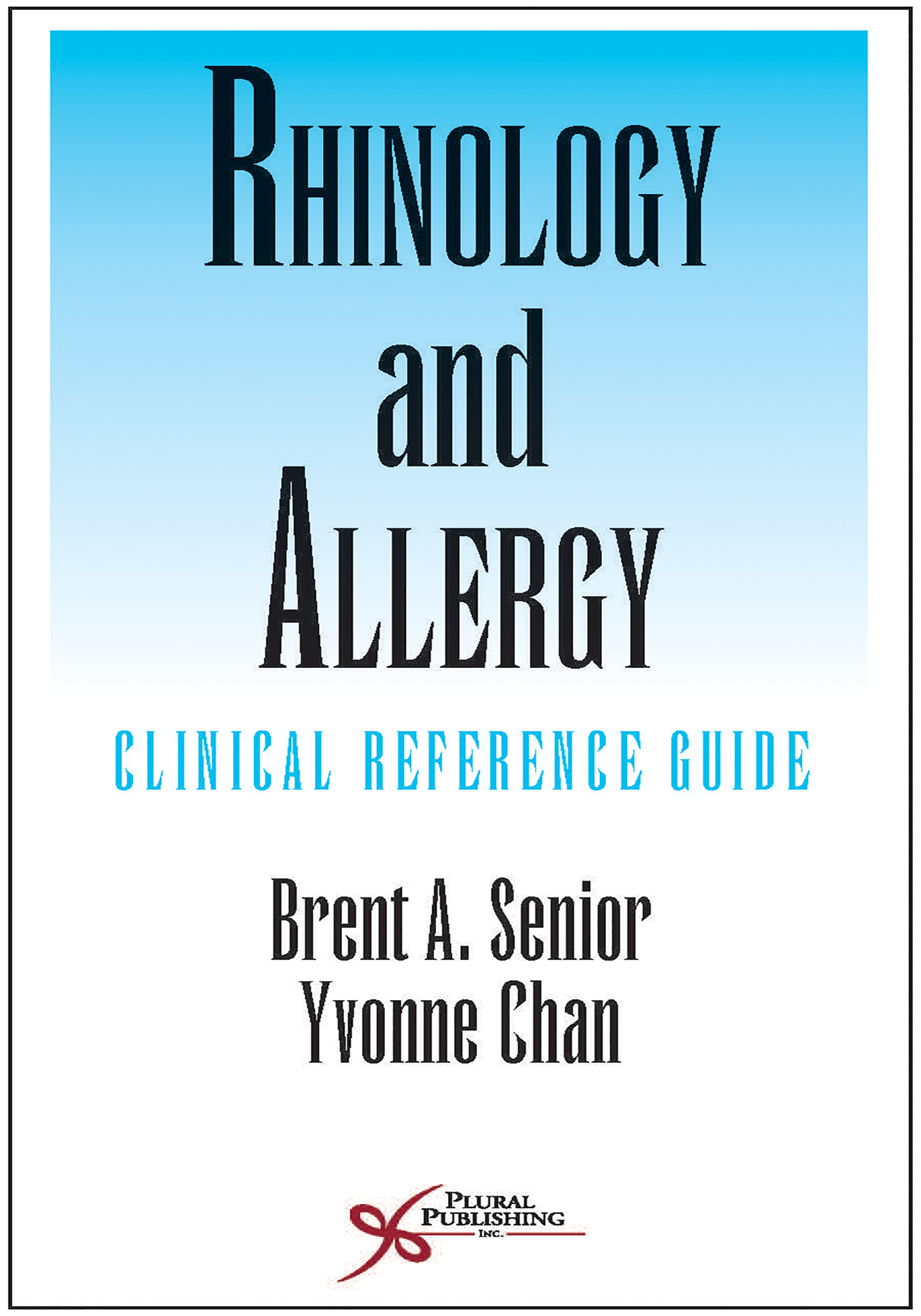
Rhinology and Allergy: Clinical Reference Guide
First Edition
Brent A. Senior, Yvonne Chan
Details: 562 pages, B&W, Softcover, 4.5" x 8"
ISBN13: 978-1-59756-965-1
© 2018 | Available
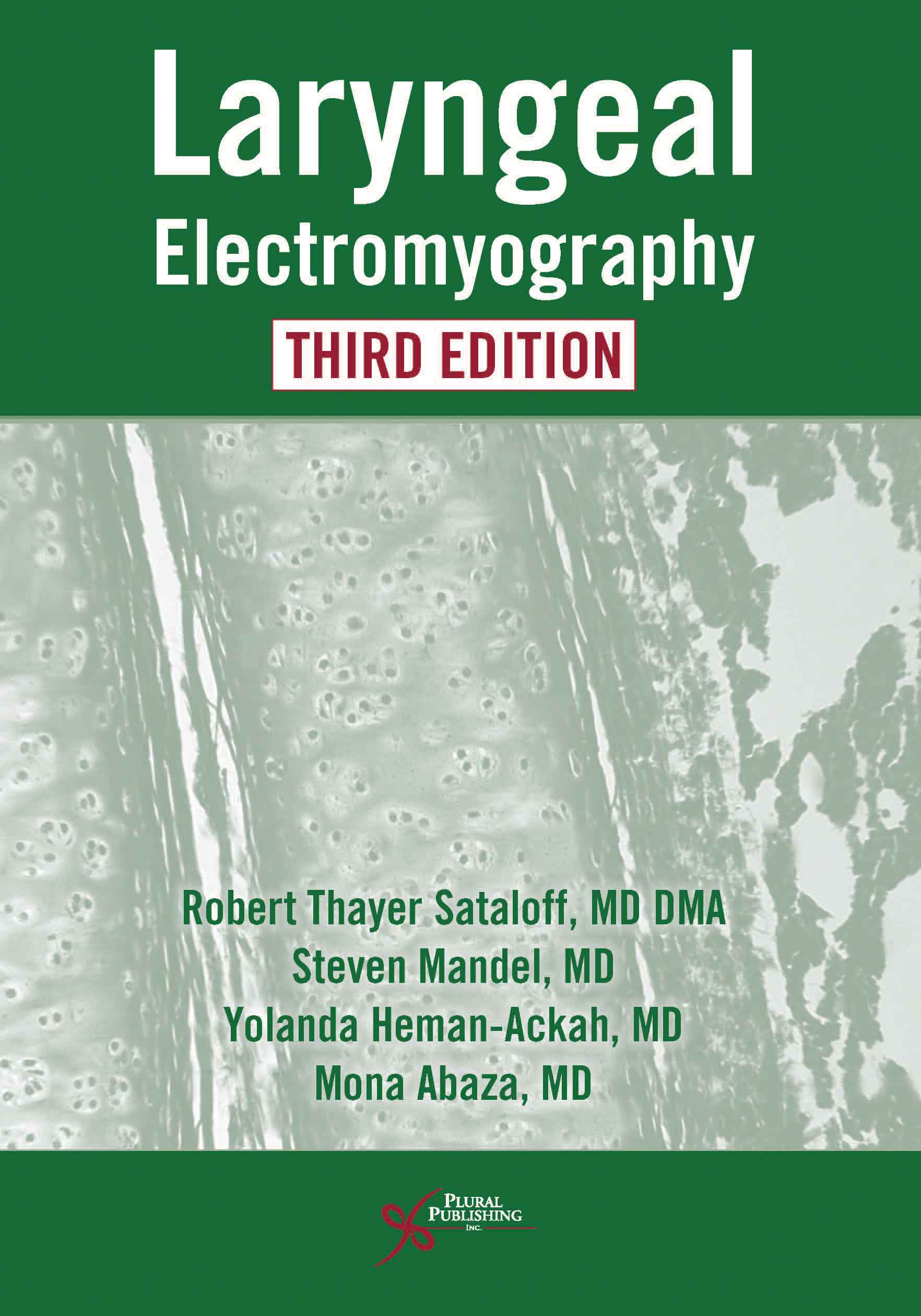
Laryngeal Electromyography
Third Edition
Robert T. Sataloff
Details: 256 pages, B&W, Softcover, 6" x 9"
ISBN13: 978-1-63550-016-5
© 2017 | Available
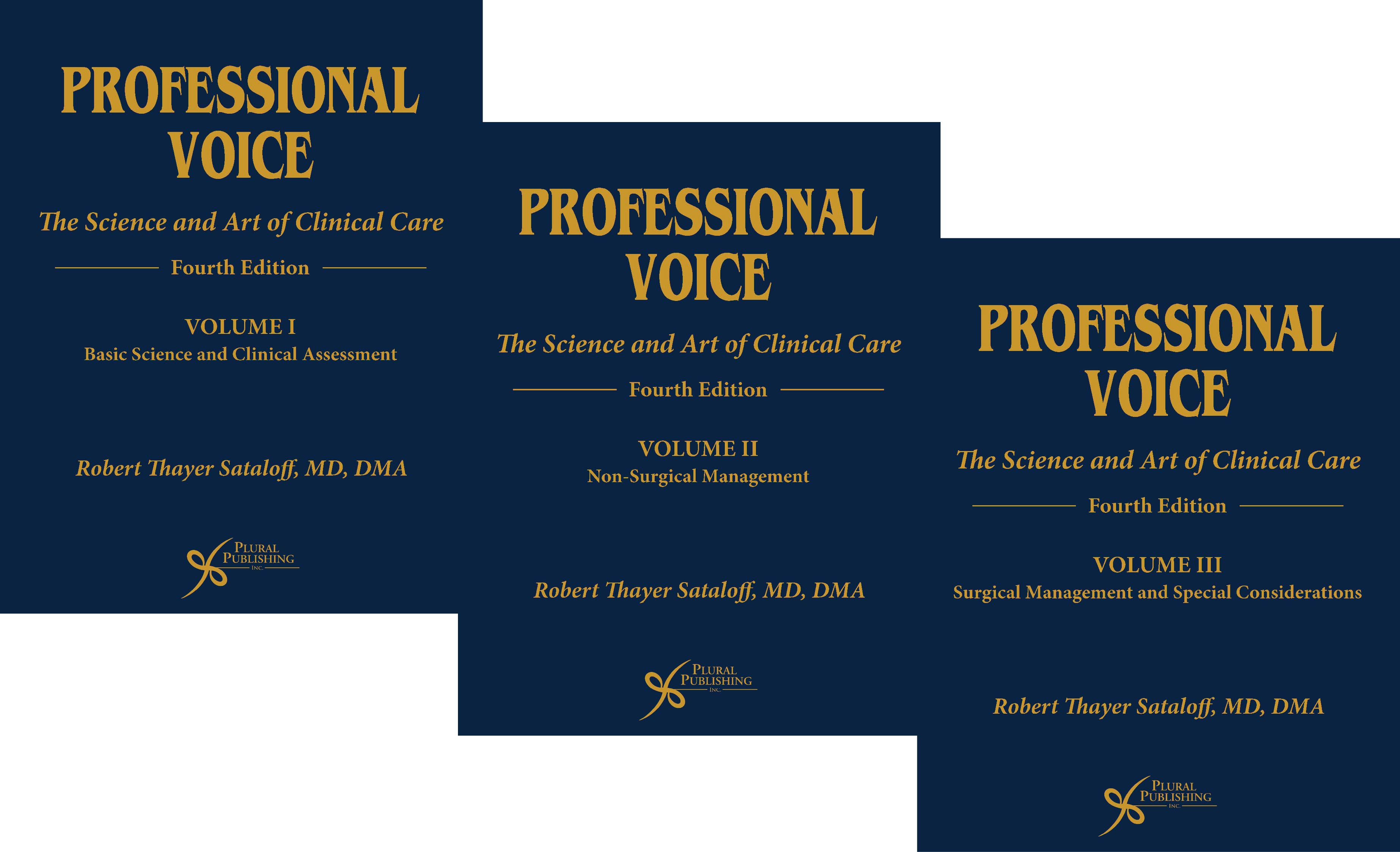
Professional Voice: The Science and Art of Clinical Care
Fourth Edition
Robert T. Sataloff
Details: 2224 pages, Full Color, Hardcover, 8.5" x 11"
ISBN13: 978-1-59756-709-1
© 2017 | Available
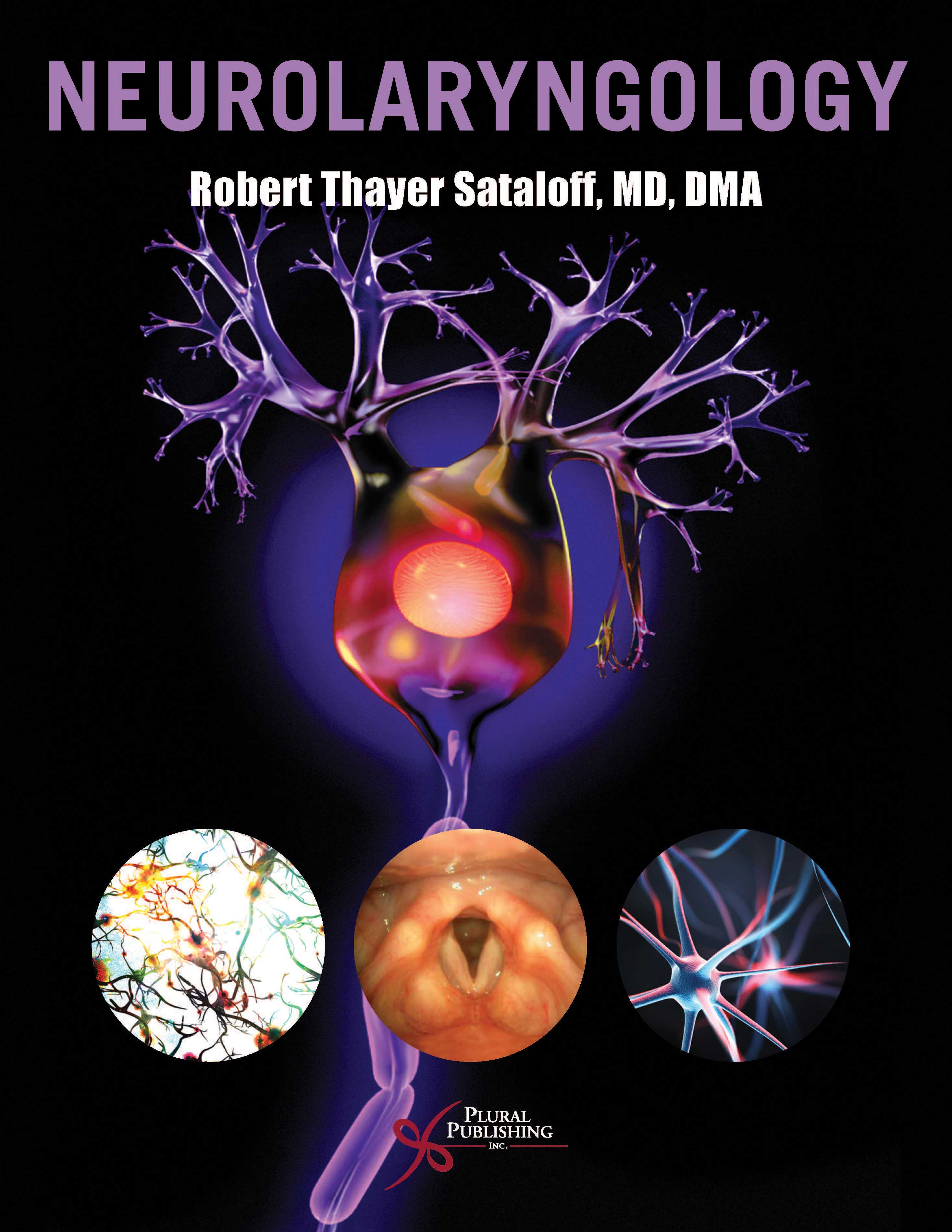
Neurolaryngology
First Edition
Robert T. Sataloff
Details: 1,161 pages, Full Color, Hardcover, 8.5" x 11"
ISBN13: 978-1-94488-383-6
© 2017 | Available
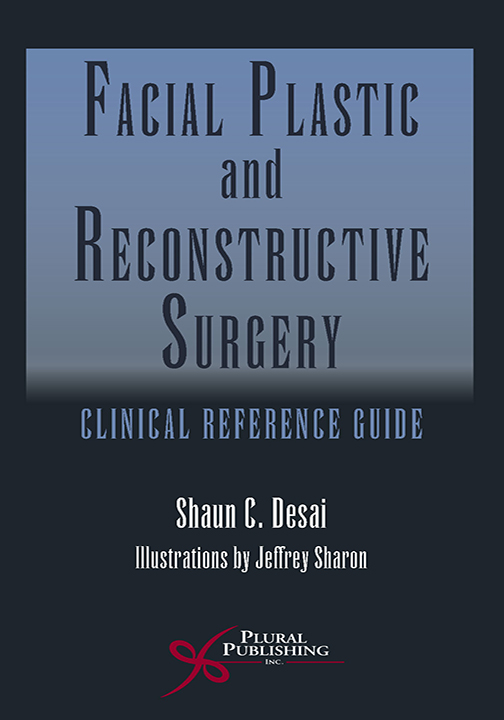
Facial Plastic and Reconstructive Surgery: Clinical Reference Guide
First Edition
Shaun C. Desai
Details: 634 pages, B&W, Softcover, 4.5" x 8"
ISBN13: 978-1-59756-963-7
© 2017 | Available
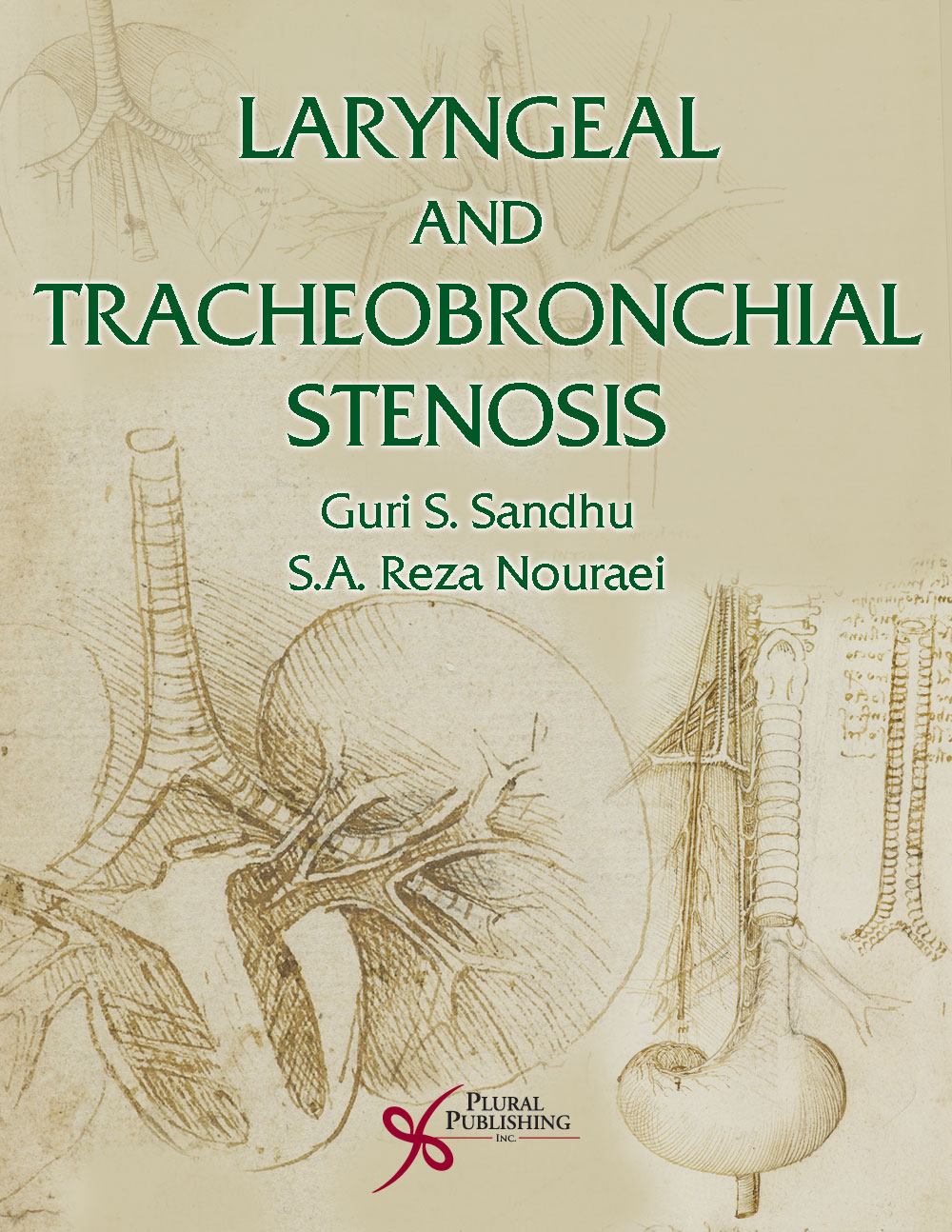
Laryngeal and Tracheobronchial Stenosis
First Edition
Guri S. Sandhu, S.A. Reza Nouraei
Details: 497 pages, Full Color, Hardcover, 8.5" x 11"
ISBN13: 978-1-59756-550-9
© 2016 | Available
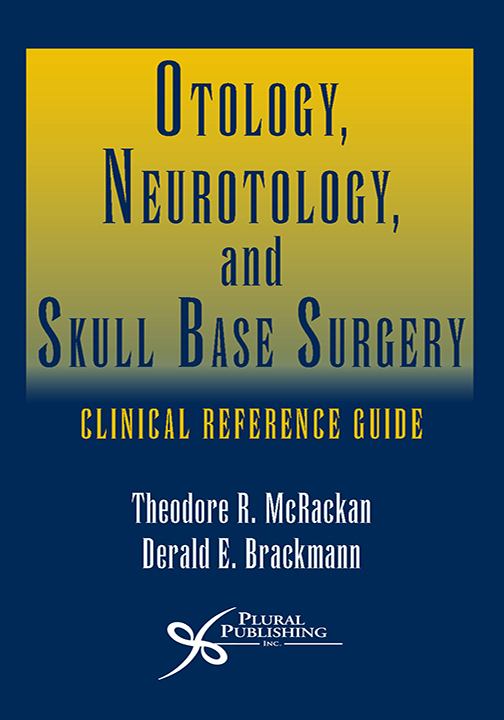
Otology, Neurotology, and Skull Base Surgery: Clinical Reference Guide
First Edition
Theodore R. McRackan, Derald E. Brackmann
Details: 593 pages, B&W, Softcover, 4.5" x 8"
ISBN13: 978-1-59756-651-3
© 2016 | Available
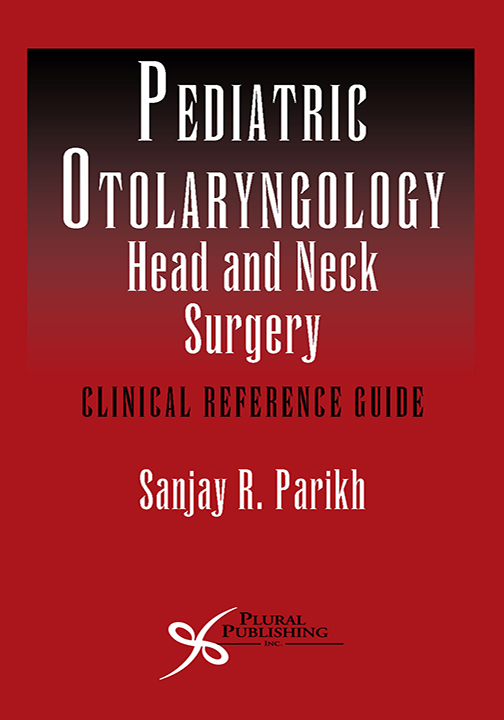
Pediatric Otolaryngology-Head and Neck Surgery: Clinical Reference Guide
First Edition
Sanjay R. Parikh
Details: 752 pages, B&W, Softcover, 4.5" x 8"
ISBN13: 978-1-59756-528-8
© 2014 | Available

Essential Paths to Life After Residency
First Edition
K.J. Lee, Yvonne Chan
Details: 496 pages, B&W, Softcover, 6" x 9"
ISBN13: 978-1-59756-465-6
© 2013 | Available
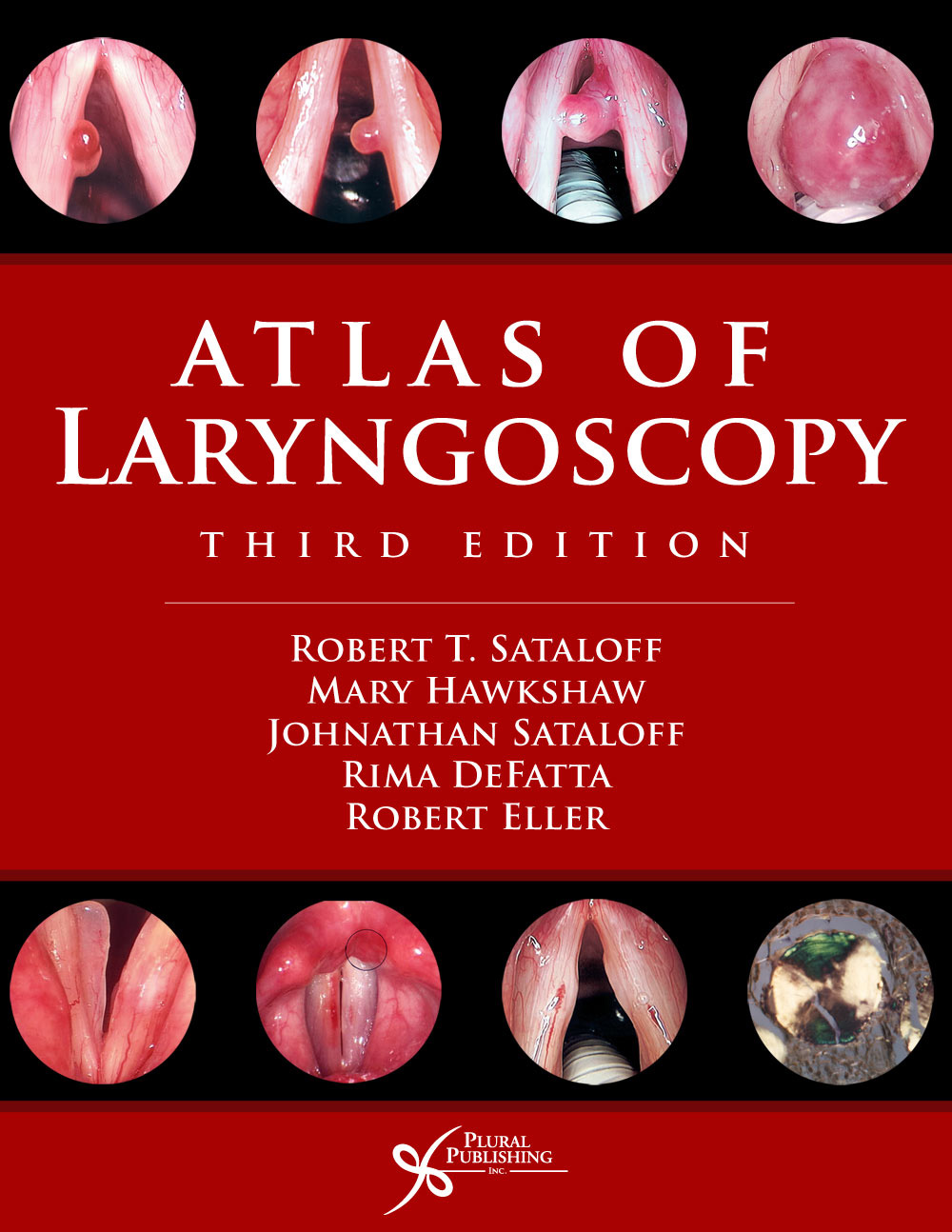
Atlas of Laryngoscopy
Third Edition
Robert T. Sataloff, Mary J. Hawkshaw, Johnathan Brandon Sataloff, Rima A. DeFatta, Robert Eller
Details: 368 pages, Full Color, Hardcover, 8.5" x 11"
ISBN13: 978-1-59756-474-8
© 2013 | Available
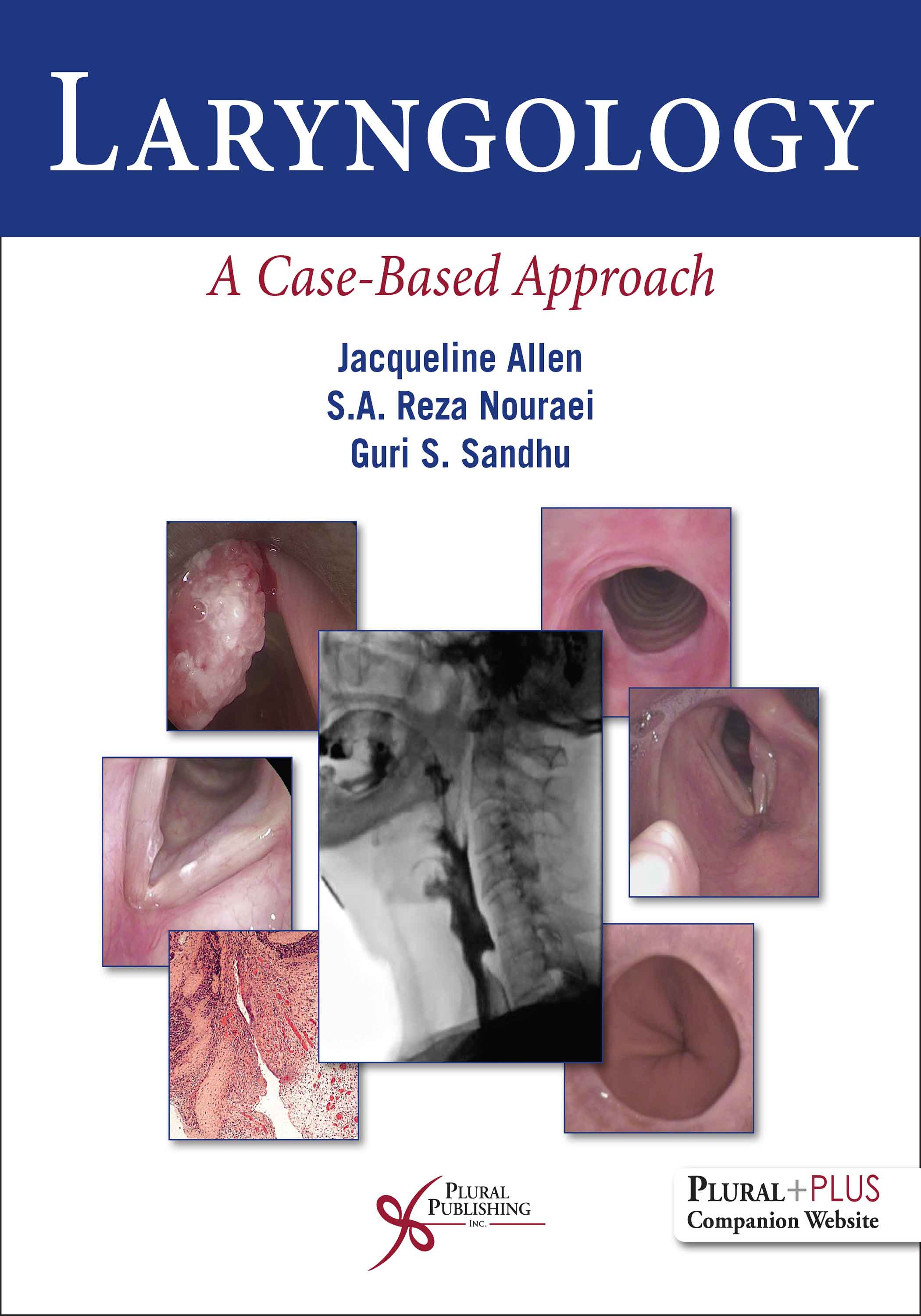
Laryngology: A Case-Based Approach
First Edition
Jacqueline Allen, S.A. Reza Nouraei, Guri S. Sandhu
Details: 615 pages, Full Color, Softcover, 8.5" x 11"
ISBN13: 978-1-94488-359-1
© 2020 | Available
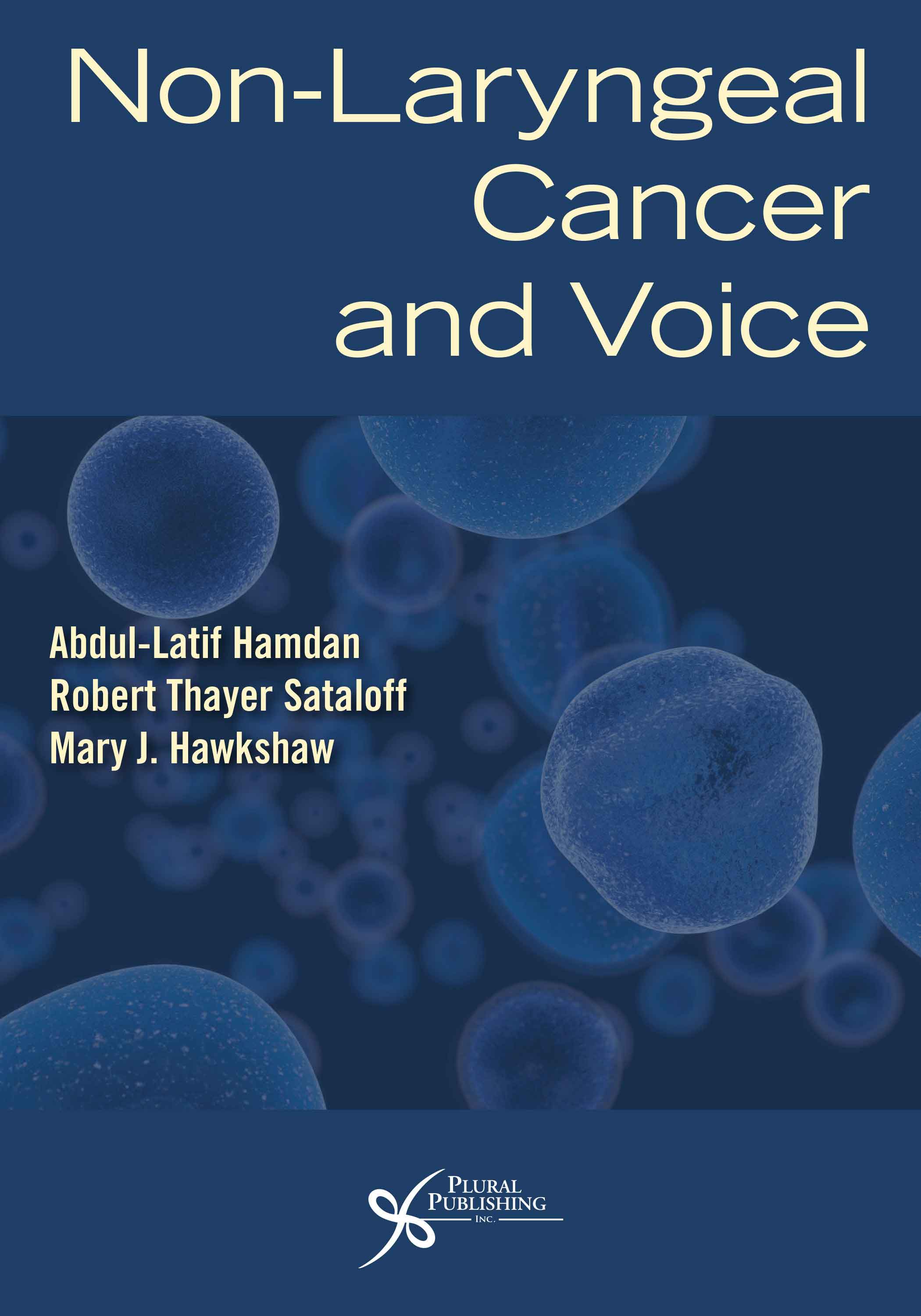
Non-Laryngeal Cancer and Voice
First Edition
Abdul-Latif Hamdan, Robert T. Sataloff, Mary J. Hawkshaw
Details: 271 pages, B&W, Hardcover, 7" x 10"
ISBN13: 978-1-63550-324-1
© 2021 | Available
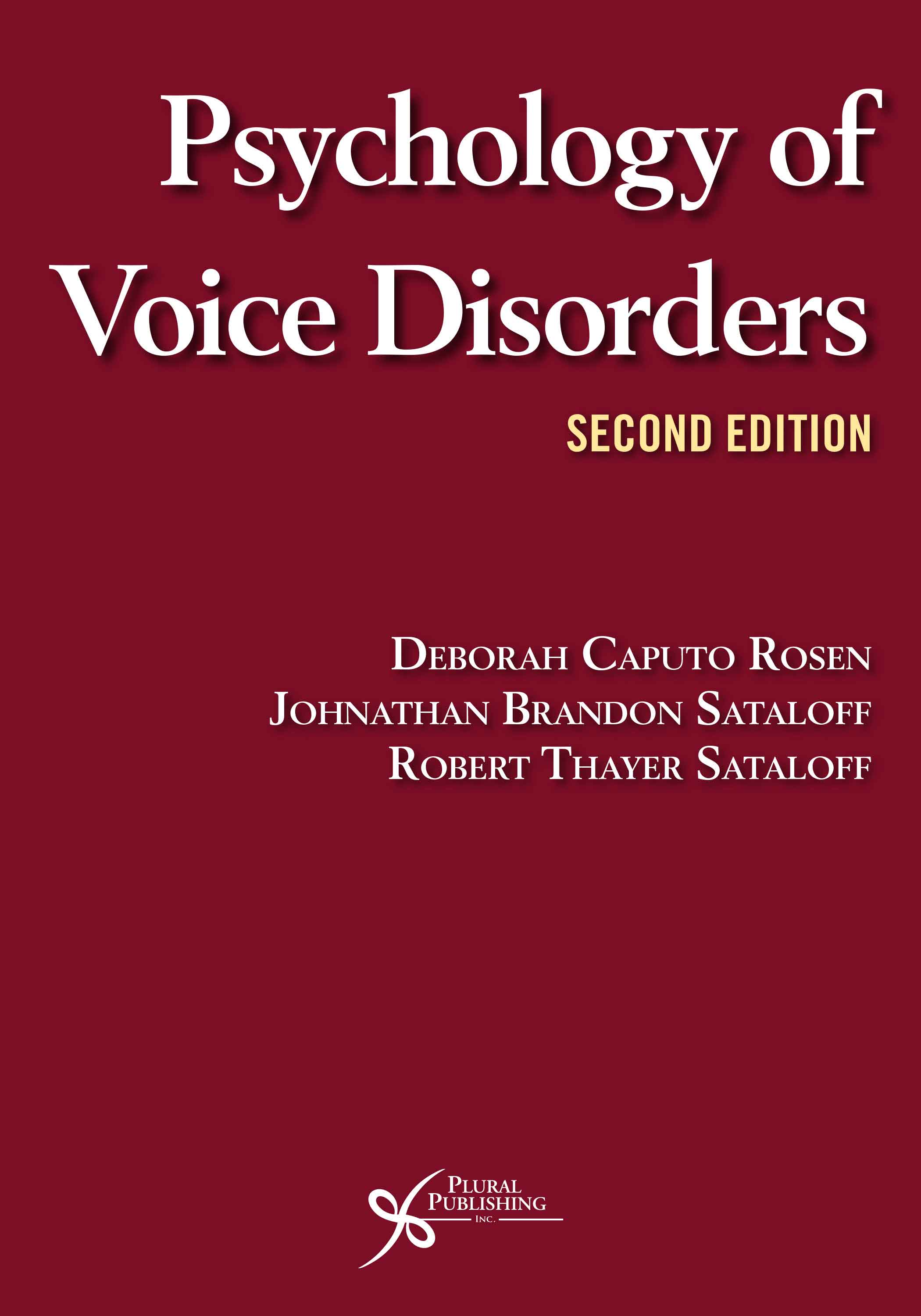
Psychology of Voice Disorders
Second Edition
Deborah Caputo Rosen, Johnathan Brandon Sataloff, Robert T. Sataloff
Details: 432 pages, Hardcover, Full Color Insert, 6" x 9"
ISBN13: 978-1-63550-235-0
© 2021 | Available
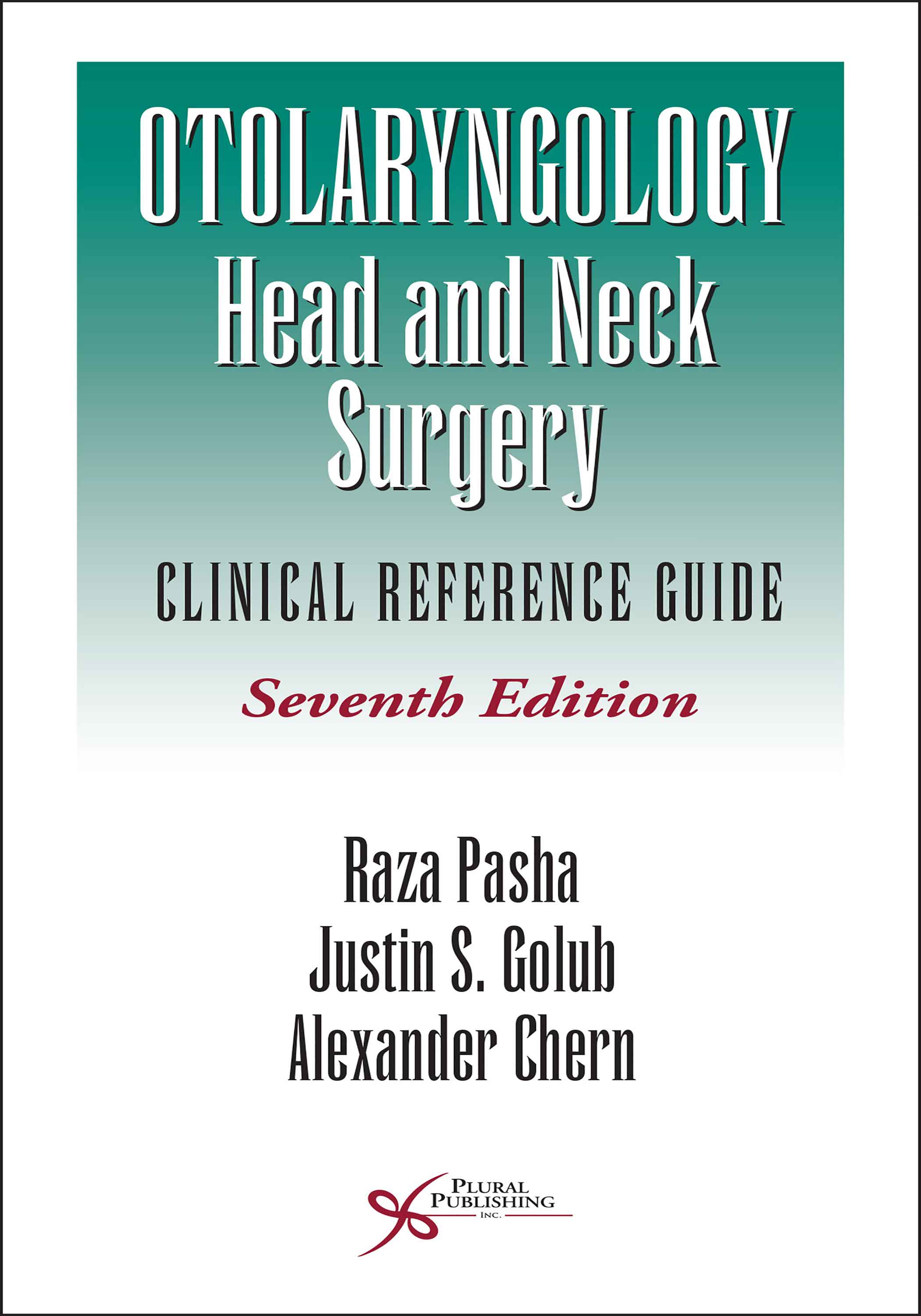
Otolaryngology-Head and Neck Surgery: Clinical Reference Guide
Seventh Edition
Raza Pasha, Justin S. Golub, Alexander Chern
Details: 742 pages, B&W, Softcover, 4.5" x 8"
ISBN13: 978-1-63550-777-5
© 2026 | Available
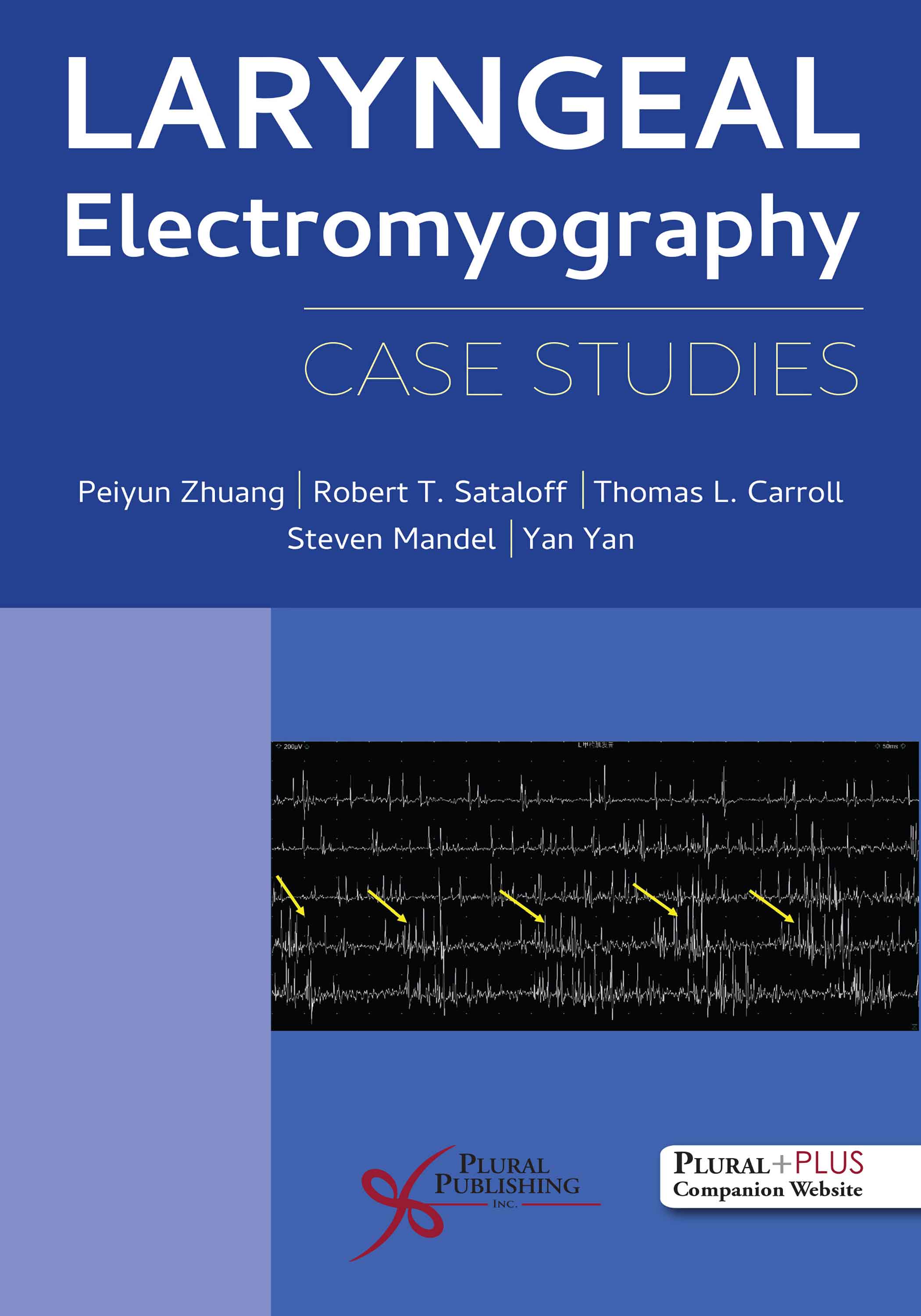
Laryngeal Electromyography: Case Studies
First Edition
Peiyun Zhuang, Robert T. Sataloff, Thomas L. Carroll, Steven Mandel, Yan Yan
Details: 222 pages, Full Cover, Hardcover, 6" x 9"
ISBN13: 978-1-63550-787-4
© 2026 | Available


